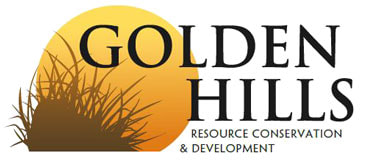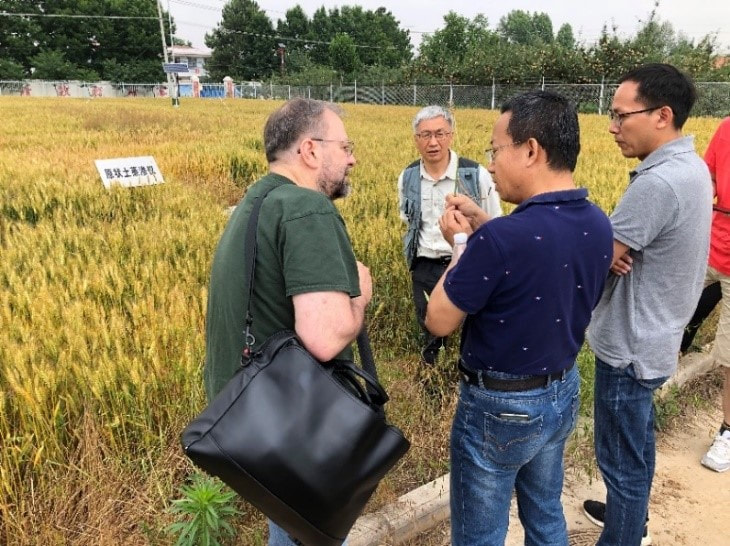|
Golden Hills RC&D, Friends of Waubonsie State Park, and Iowa Department of Natural Resources are excited to announce a call for applications for the latest round of an artist residency program at Waubonsie State Park! This is the second year of the program, the first of its kind in the state.
Located in the Loess Hills of Southwest Iowa, Waubonsie State Park’s 2,000 acres feature prairies, savannas, and woodlands which are home to diverse flora and fauna, not to mention breathtaking vistas. Artists will receive lodging in a studio cabin and a primitive studio space in the park at no cost for the duration of the residency. In return, artists will deliver at least one public program per month of their residency and donate one piece of art to the park at the conclusion of their stay. Learn more and apply today: goldenhillsrcd.org/artist-in-residence
1 Comment
A hub for nature, culture, and more in the Loess Hills-Missouri River Region
The Loess Hills Missouri River Region recently relaunched WanderLoess, an online hub for nature, recreation, tourism, arts, and culture in southwest Iowa’s Harrison, Pottawattamie, and Mills counties. WanderLoess was conceptualized in 2015 during a regional planning process for the Loess Hills Missouri River Region Parks to People plan. and was envisioned as "Coordination of talented artisans, naturalists, chefs and performers that translates into an exceptional online and off-line resources and events delivering education, recreation, local food experiences, arts, and entertainment. "WanderLoess is a play on words--"wanderlust" meaning a desire to travel and explore, and "loess" (pronounced 'luss,' rhyming with 'bus') being our local soils. The name started with an Instagram hashtag by a bicyclist in the Loess Hills and has grown to include exploration and enjoyment of southwest Iowa’s myriad amenities and attractions. The website includes activities categorized into nature and outdoor recreation, local foods and agritourism, arts, and culture; themed “best-of” lists and sample itineraries; places to stay; and a map of sites and activities in the tri-county region. The new site was created in partnership with Hyperion Creative Agency of Council Bluffs. Visit the new site at www.wanderloess.com. The Loess Hills Missouri River Region includes a board of directors with representatives from each of the three counties and is coordinated by Golden Hills RC&D of Oakland. Learn more about the initiative and download the full plan at www.goldenhillsrcd.org/lhmrr. By Bill Blackburn While U.S.-China relations have been tense recently when it comes to international trade, one area that has witnessed a new era of collaboration and cooperation between the two countries is the study of the Loess Hills. In June, a small gathering of U.S. and Chinese experts on loess soils and restoration met in Yangling, Shaanxi, China to share information on the Iowa Loess Hills and China Loess Plateau, their condition, value, restoration and protection, as well as the latest research on loess soils. Loess (pronounced as “luss,” “Lois,“ or “less”) is a yellowish deposit of wind-blown rock dust found in Germany, Argentina, New Zealand, U.S., China, and many other parts of the world. However, it forms hills of significant height (60-350 feet) only in two places: in the Yellow River region in and around Shaanxi province, China, and in the mini-mountains (bluffs) in the Midwest U.S. that parallel the Missouri River 220 miles from Mound City, MO to Westfield, IA. In Iowa, the beautiful sharp-cliffed hills can be seen along Interstate 29 through the western sides of Fremont, Mills, Pottawattamie, Harrison, Monroe, Woodbury, and Plymouth Counties. They were formed from glacier-ground rock powder brought down the Missouri River and blown into dunes by westerly winds. The Chinese “Loess Plateau,” which covers an area only slightly less than the entire state of Texas, is located several hundred miles southwest of Beijing. The loess there eroded from various mountain areas over millions of years, was collected in the Gobi and other deserts, and from there was blown into the plateau. Over the centuries, the Loess Plateau, had become massively eroded from overgrazing and deforestation, with the resulting erosion filling the Yellow River with deposits of so much loess that devastating flooding of croplands became common. A huge restoration project funded largely by the World Bank and others set out to partially restore the plateau over an area roughly the size of New Jersey. The June U.S.-China Exchange on Loess Landforms came about as a result of a lecture series on the Loess Plateau done in Western Iowa and Omaha in 2017 by John Liu, a Chinese-American documentary film-maker from Beijing, who had recorded the dramatic conditions of the Plateau before and after restoration. Acclaimed soil scientist Professor Robert Horton of Iowa State University worked with his long-time friend, senior Professor Baoyuan Liu (no relation to John) and Professor Fan Jun, both soil scientists at China’s Northwest University of Agriculture and Forestry, to have NWUAF sponsor the meeting. The Gilchrist Foundation, which co-sponsored John Liu’s 2017 lecture tour, also funded the participation of young professionals, Graham McGaffin, of the Nature Conservancy-Loess Hills, Sioux City, and Assistant Professor Bradley Miller of Iowa State. Also participating from the U.S. were Professor Michael Thompson of Iowa State, and Bill Blackburn of the Green Hollow Center in Fremont County. Presentation were also given via the internet by Professor Tom Bragg, plant specialist from the University of Nebraska-Omaha, and John Thomas, loess erosion expert from the Hungry Canyons erosion control program at Golden Hills RC&D in Oakland. Besides the one-day conference in Yangling, the U.S.-China delegation also visited NWUAF soils research stations in the Loess Plateau near Chang Wu and Ansai to review their latest research projects. The tour was capped off with a visit to the famous terra cotta warriors of the Qin Dynasty Emperor that were buried near Xian in the Plateau around 200 BC---warriors we were surprised to learn were made of loess soil glued together with rice water. The agenda and presentations offered at the Exchange and pictures from the tour of the Plateau can be seen on the Golden Hills RC&D website ( www.goldenhillsrcd.org/ucell.html). A follow-up meeting in Western Iowa is now being considered. |
Archives
June 2024
Categories
All
|
Address712 South Highway Street
P.O. Box 189 Oakland, IA 51560 |
ContactPhone: 712-482-3029
General inquiries: [email protected] Visit our Staff Page for email addresses and office hours. |








 RSS Feed
RSS Feed